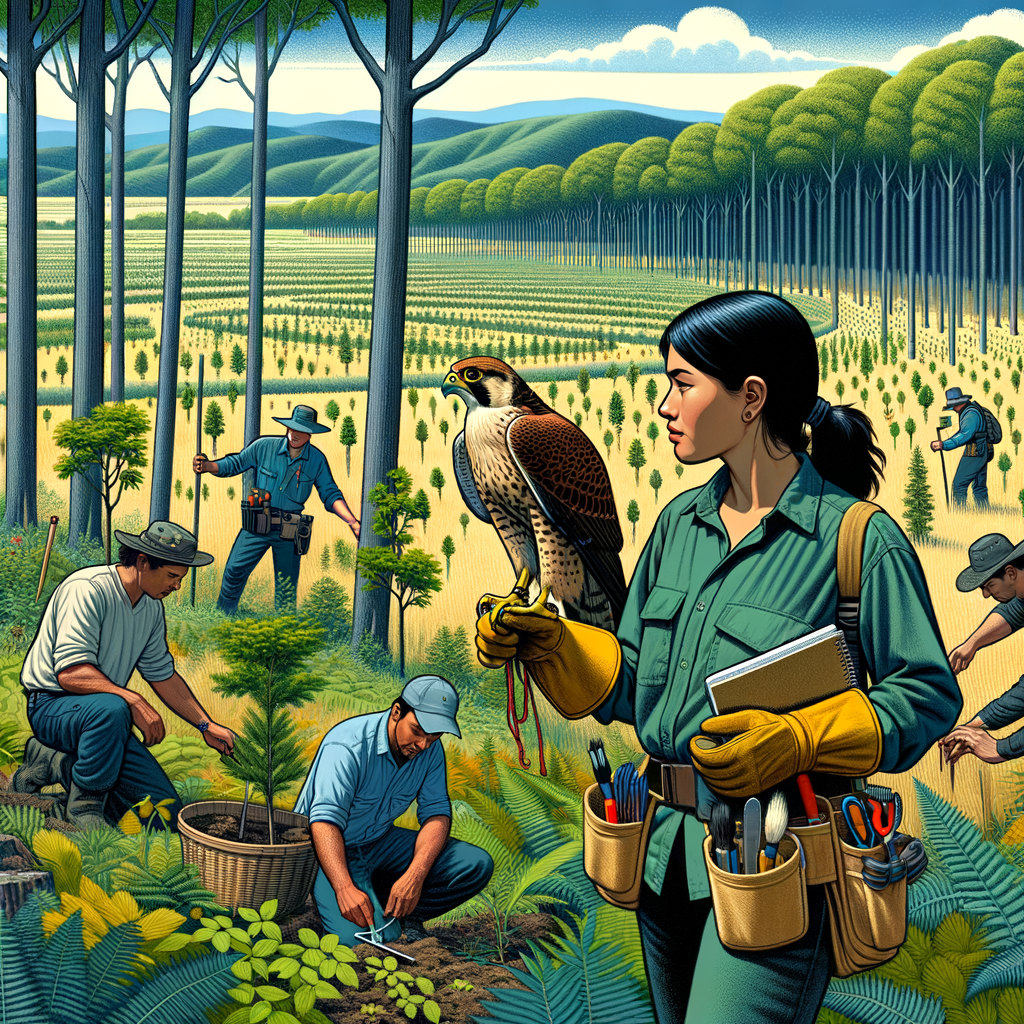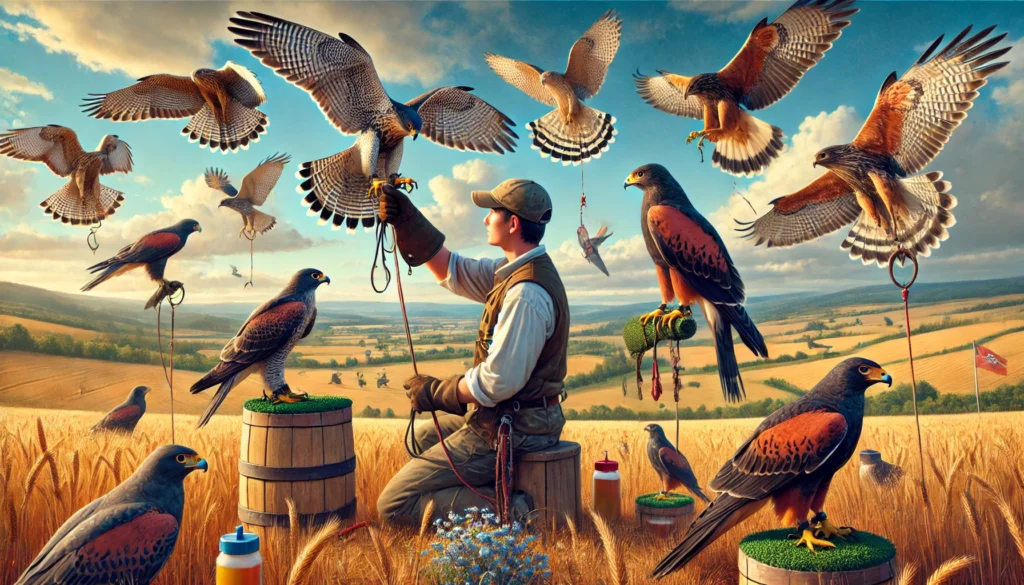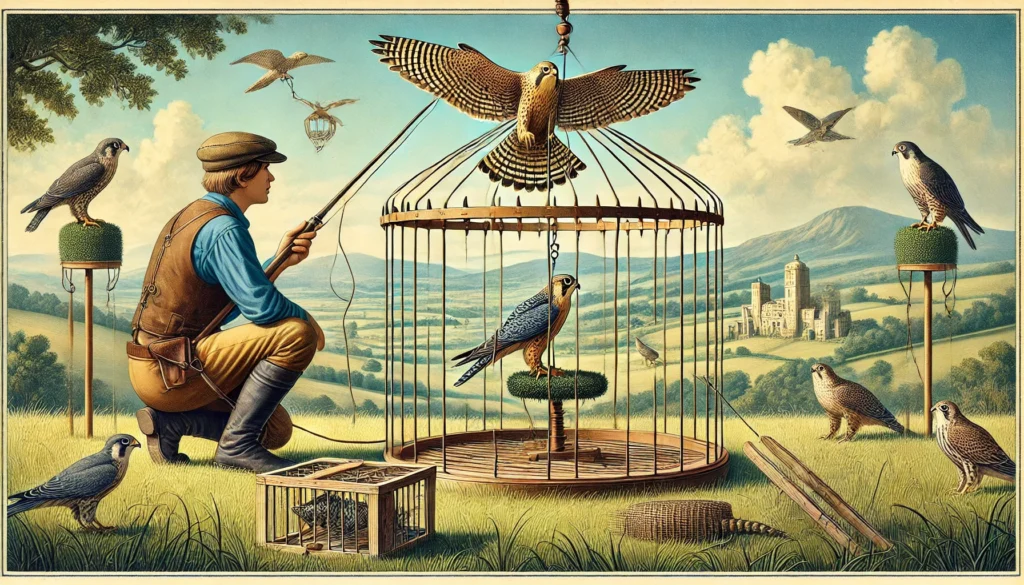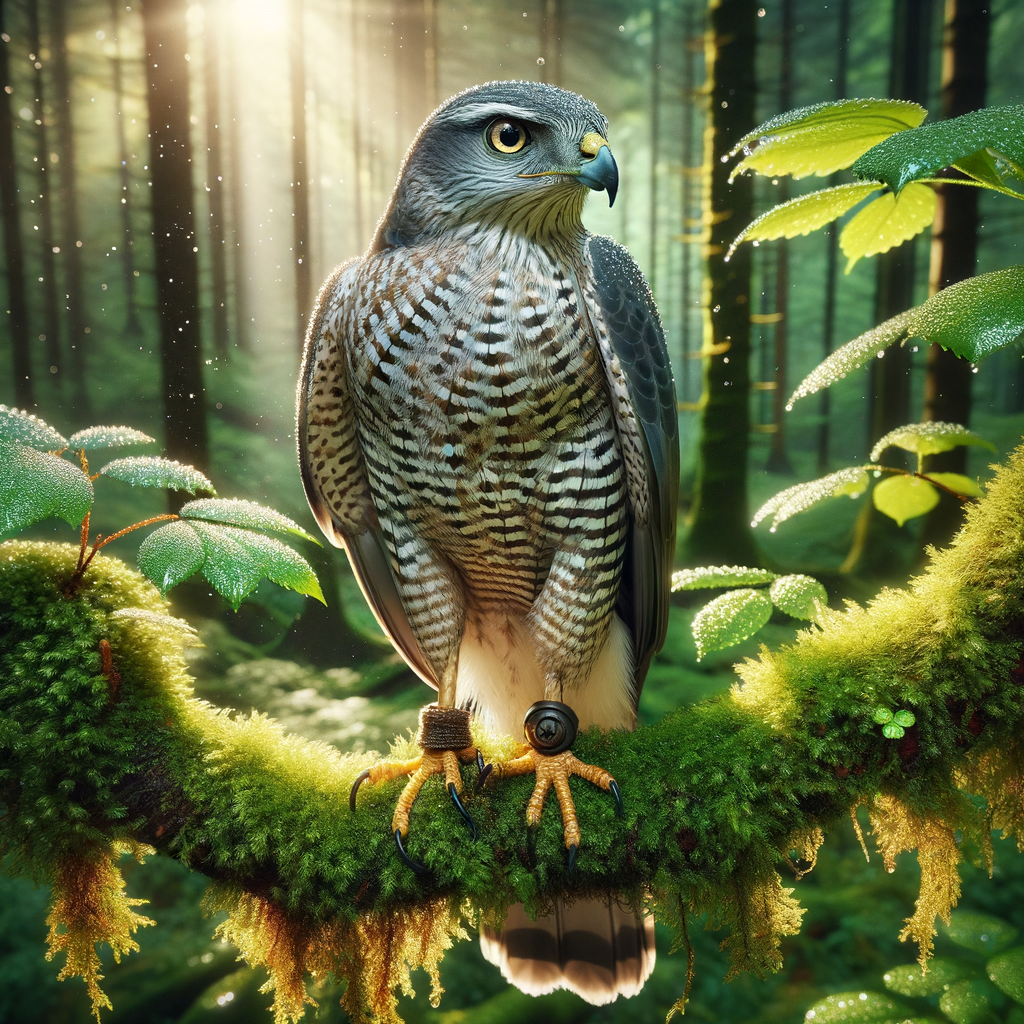Key Insights on Habitat Restoration and Falconry
- Syncing Ecosystem Balance: Habitat restoration helps ensure that falcons and other wildlife have a suitable and sustainable environment to thrive.
- Boosting Falcon Numbers: By restoring natural habitats, we can support the growth and health of falcon populations.
- Supporting Biodiversity: Healthy ecosystems created through restoration efforts benefit a wide range of species, not just falcons.
- Educational Opportunities: Falconry allows people to learn about conservation and the importance of maintaining natural habitats.
- Promoting Conservation Efforts: Practicing falconry highlights the need for ongoing habitat restoration and wildlife protection.
- Encouraging Community Engagement: Engaging in habitat restoration projects connects people with nature and inspires community action.
- Mitigating Habitat Loss: Restoration activities counter the negative impacts of urbanization and deforestation on falcons and other wildlife.
- Long-term Environmental Health: Sustained efforts in habitat restoration contribute to the overall health and resilience of ecosystems.
These insights show how intertwined habitat restoration and falconry are, emphasizing the importance of protecting natural environments for the benefit of all wildlife.
Unleashing Nature’s Guardians: Habitat Restoration with Falconry
In this article, we delve into the magical connection between falconry and habitat restoration. Falcons, those majestic birds of prey, play a crucial role in maintaining the balance and health of our ecosystems. By participating in habitat restoration falconry, you are not only nurturing your love for these incredible birds but also helping to restore our planet’s natural beauty.
Curiosity piqued? Great! Through this journey, you’ll discover how falcons are our modern-day heroes, much like the legendary warriors of Ireland who once guarded their homeland. Just as those warriors protected the sacred lands of their ancestors, today’s falconry enthusiasts uphold the traditions and contribute to the revival of our precious habitats. Keep reading to learn how you can become part of this noble quest and make a lasting impact on our environment.
Habitat Restoration Through Falconry
Habitat restoration is a crucial aspect of preserving our natural world, and falconry plays a significant role in this effort. Falconry habitat efforts focus on restoring wildlife habitats to ensure that different species, including falcons, have a healthy and viable environment to thrive in. Understanding the relationship between habitat restoration and falconry helps us appreciate the depth of this ancient practice and its modern applications.
The Importance of Habitat Restoration
Restoring wildlife habitats involves bringing back the natural settings that many animals and birds rely on. Habitats provide food, shelter, and breeding grounds, which are essential for animal survival. Nowadays, many habitats are under threat due to various human activities like deforestation, pollution, and urban development. Habitat restoration efforts aim to reverse these negative impacts by replanting native vegetation, cleaning up polluted areas, and protecting ecosystems from further destruction.
Falconry and Wildlife Conservation
Falconry, the art of training birds of prey to hunt in cooperation with a human handler, has been practiced for thousands of years. However, its role has expanded beyond hunting to include conservation efforts. For instance, falconers often participate in restoration projects by reintroducing species into the wild, which helps maintain biodiversity. By nurturing and training falcons, they contribute to strengthening the population of these magnificent birds and ensuring their survival.
Falconry Habitat Efforts in Action
There are many ways that falconers contribute to habitat restoration. One of the most effective methods is through breeding programs that aim to increase the numbers of endangered or rare species. These birds are then carefully reintroduced into restored or protected habitats. Moreover, falconers use their expertise to monitor bird populations and ecosystems, providing valuable data that supports conservation strategies.
Learn more about the history of falconry and how it has evolved to include conservation activities on this page.
Restoring Wildlife Habitats for Future Generations
The commitment to restoring wildlife habitats ensures that future generations can enjoy and learn from nature. Falconers play a key role by advocating for habitat protection and educating the public about the importance of biodiversity. As we become more aware of the environmental challenges we face, we can support falconry habitat efforts and participate in initiatives that promote a healthier planet.
Visit the Falconry Equipment section to discover the tools used by falconers in their conservation work.
By understanding and supporting these efforts, we help create a sustainable environment where both wildlife and humans can coexist harmoniously. Discover more about the role of falconry in conservation on this page.
Whether you are a seasoned falconer or just getting started, gaining knowledge about habitat restoration and falconry can inspire you to contribute positively to our natural world. For those interested in embarking on this journey, check out Falconry for Beginners to learn the basics and become part of this noble tradition.
Habitat Restoration and Falconry Efforts
Introduction
Welcome to Learn Falconry, where we are committed to the art of falconry while also focusing on habitat restoration. In our mission to protect and enhance the habitats of falcon species, we combine ancient falconry practices with modern conservation techniques.
Market Size and Growth
The habitat restoration market is growing rapidly and is expected to reach USD xx.x Billion by 2031. This growth highlights the increasing awareness and investment in ecological improvement projects, which play a crucial role in creating sustainable environments for falcons and other wildlife.
Grant Funding
In 2024, significant grant programs are expected to support habitat restoration efforts. For instance, the Five Star and Urban Waters Restoration grant program will award around $2 million nationwide. This funding is pivotal for community-based projects that aim to restore diverse ecosystems.
Project Focus and Geographic Areas
Projects funded by these grants often include wetland, riparian, forest, and coastal habitat restoration. Community outreach, education, and stewardship are also essential aspects. Grants are available nationwide, with additional funding for specific geographic priorities ensuring that critical areas receive needed support.
Metrics and Evaluation
| Metric | Description |
|---|---|
| Acres Restored | Total land area restored to native conditions. |
| Miles of Riparian Restoration | Length of waterways and surrounding areas restored. |
| Volume of Stormwater Runoff Prevented | Amount of stormwater managed to prevent pollution. |
These metrics help track the success and impact of habitat restoration efforts, ensuring they meet environmental goals.
Stakeholder Engagement
Stakeholder engagement is critical for the success of habitat restoration projects. By involving local communities, landowners, and conservation groups, we ensure that restoration efforts are transparent and collaborative. This approach fosters strong community ties and long-term commitment to conservation.
Ecosystem Restoration Standards
The Ecosystem Restoration Standard provides a structured method for verifying restoration efforts at the field level. It covers various restoration interventions and helps assess the performance of different projects to ensure they meet set ecological benchmarks.
Peregrine Falcon Habitat Efforts
The National Aviary’s Peregrine FalconCam Season starts in February 2024. This program highlights the importance of a diet that includes pigeons, songbirds, and other birds for the falcons’ health and breeding success.
American Kestrel Habitat Efforts
The Harris Center’s conservation program for American Kestrels has nearly doubled the number of nest boxes. They are installed in various locations, including Antrim, Hillsborough, and Harrisville, encouraging local population growth.
Wood Duck Habitat Efforts
In collaboration with the Monadnock Chapter of Ducks Unlimited, the Harris Center has installed 10 Wood Duck nest boxes in areas like Hancock, Antrim, and Harrisville. These boxes are monitored annually to ensure they are being used by ducks and other waterfowl.
Broad-winged Hawk Habitat Efforts
Over the past three years, the Harris Center has documented 21 nests as part of its Broad-winged Hawk Tracking project. This research helps understand the species’ migration and wintering habits, aiding in better conservation strategies.
Long-term Habitat Management
Long-term habitat management is essential for sustaining ecosystems that support wildlife. These strategies ensure that restored areas remain beneficial for wild species, including falcons.
Native Species Promotion
Promoting native species is vital for improving biodiversity and conservation planning. By supporting the collection of biological field data, organizations can better assess and protect diverse wildlife populations.
Community Engagement and Research Collaboration
Engaging local communities in monitoring and conservation activities fosters landowner participation and enhances restoration efforts. Collaboration with research centers helps improve biodiversity management through thorough data analysis.
Government and Farm Bill Support
Support from the U.S. Fish & Wildlife Service and Farm Bill incentives plays a significant role in restoring and conserving wildlife habitats. These programs provide the necessary funding and incentives for private land conservation initiatives.
By focusing on the aspects above, Learn Falconry is dedicated to enhancing habitats for falcons and other wildlife, ensuring their survival and well-being for future generations.
Final Thoughts on Habitat Restoration Through Falconry
In 2024, the focus on habitat restoration has never been stronger. Organizations worldwide are investing in diverse projects to ensure healthy environments for falcons and other wildlife. With significant funding and grants, such as the Five Star and Urban Waters Restoration grant program, a variety of ecological improvements are underway. These include wetland, riparian, forest, and coastal habitat restoration, all aimed at fostering rich ecosystems.
A key example is the National Aviary’s Peregrine FalconCam Season, which emphasizes the importance of a healthy diet for falcons to support their breeding activity. Efforts are also being made for the American Kestrel, with an expanded program adding more nest boxes to help their population. Similarly, projects like those for the Wood Ducks and Broad-winged Hawks ensure the tracking and monitoring of these species for better conservation strategies.
Community engagement and stakeholder collaboration play crucial roles in these initiatives, enabling successful tracking and improvement of metrics such as acres restored and stormwater runoff prevention. Furthermore, the long-term habitat management and research collaboration with scientific bodies ensure that these efforts lead to sustainable and thriving ecosystems.
These efforts show a strong commitment to habitat restoration through falconry, highlighting the importance of preserving and enhancing natural habitats for future generations. By engaging with local communities and promoting native species, we can ensure that the majestic falcon and other wildlife continue to thrive in their natural environments. The journey of habitat restoration is ongoing, but with continued dedication, significant progress can be made in protecting these precious ecosystems.



